The indigenous Australians few know
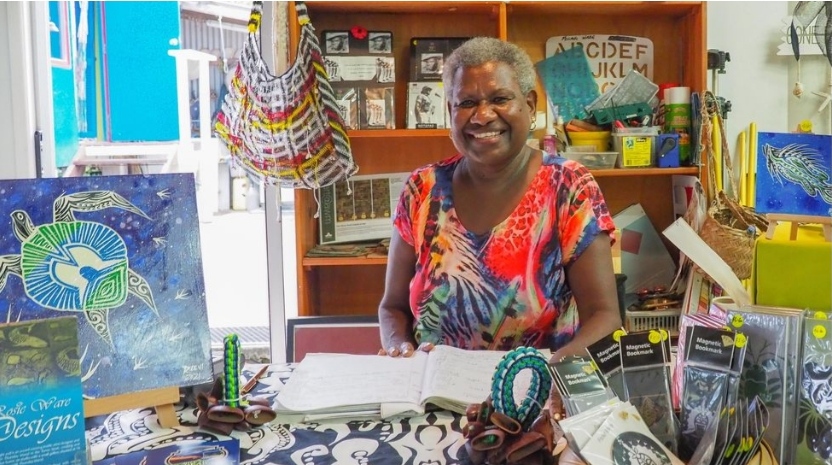
By Sarah Reid
Torres Strait Islander people have a rich cultural identity unique to that of Aboriginal Australians, yet few travellers will have heard of them.
As I stepped off the ferry onto Thursday Island’s main wharf, a gust of wind nearly lifted my sunglasses into the deceptively idyllic Torres Strait – its notoriously shallow waters and razor-sharp reefs have claimed many a ship since Spaniard Luís Vaz de Torres became the first European to navigate this remote passage at Australia’s northern tip in 1606.
“The south-east trade winds can get up to 40km per hour during winter, then we get the wild north-westerly winds in the summer that bring the storms,” said local guide Sue Johns, as fellow ferry passengers filed onto her waiting tour bus. “That’s 12 months of bad hair days,” she joked as we rumbled off around the small, hilly isle.
The administrative capital of the Torres Strait Islands, Thursday Island (locally known as “TI”) is one of more than 200 islands that once formed part of a land bridge between Queensland’s Cape York Peninsula and modern-day Papua New Guinea. That changed around 8,000 years ago, when rising sea levels flooded the landscape at the end of the last Ice Age.
Home to around half of the Torres Strait’s 6,000-odd residents, approximately 80% of whom identify as indigenous, TI is not your typical tropical island holiday destination. There are no backpacker hostels or family resorts. With saltwater crocodiles patrolling TI’s beaches, it’s too risky to take a dip. And then there’s the relentless wind. But there’s still a great reason to visit this faraway corner of Australia, some 2,700km north of Brisbane. And I’m not talking about the opportunity to drink a pint in Australia’s northernmost pub, the Torres Hotel, alongside FIFO (fly in, fly out) workers, most of whom come to work in government jobs ranging from health to defence.
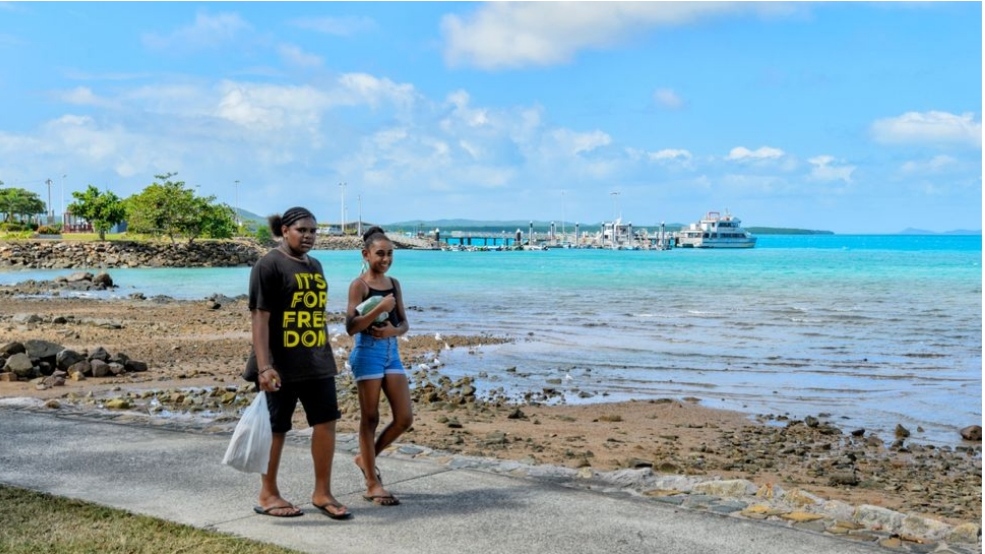
Thursday Island is home to around half of the Torres Strait’s 6,000-plus residents
Known as “Waiben” to the Kaurareg people of the Inner (or Southern) Islands – which is one of five island clusters represented by the five-pointed star of the Torres Strait Islander flag – TI is the most accessible place to experience Torres Strait Islander culture in its birthplace.
Of Melanesian descent, Torres Strait Islander people have a long history of trading with the people of Papua New Guinea and the Aboriginal communities of Cape York. But they have cultural and linguistic traditions of their own, which vary between each island group and the 18 indigenous communities within them. While most non-indigenous Australians are familiar with key elements of mainland Aboriginal culture and history, few will have heard of Tagai, a key creator deity represented by a constellation of stars in the southern sky that forms the cornerstone of Torres Strait Islanders’ spiritual beliefs. Or that, unlike the Aboriginal concept of Dreaming or Dreamtime, Torres Strait Islander culture distinguishes between four main time periods.
With stops at the 19th-Century Green Hill Fort, now a museum, and the island’s cemetery, its sprawling Japanese section a reminder of TI’s once-prosperous pearling industry, Johns’ tour offers a great primer on the history and culture of the Torres Strait, which is also the birthplace of the late Eddie Koiki Mabo, a pioneer of Australia’s indigenous land rights movement. There’s more to discover on TI than can be squeezed into a day trip, though given the eyewatering cost of hotel rooms, I wasn’t surprised to be one of the only tourists left on the island when the afternoon ferry departed for the 70-minute trip to the mainland port of Seisia.
Along with climate change impacts and the blow to the Torres Strait’s lucrative rock lobster industry dealt by the coronavirus pandemic, the rising cost of island living is an increasing threat to the continuity of Australia’s lesser-known indigenous culture.
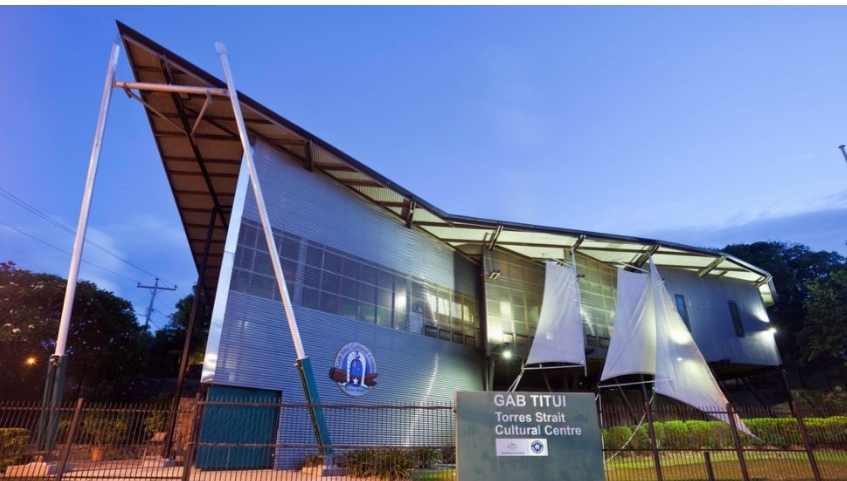
The Gab Titui Cultural Centre is a contemporary art gallery and keeping place for cultural artefacts
“Young people are also leaving due to a lack of opportunities, and many of them don’t come back,” said Rose Ware, an award-winning Torres Strait Islander textiles artist, whose home studio on Hargrave Street can be visited on weekdays. Ware is passionate about engaging the younger generation in Torres Strait Islander culture through her art, some of which takes inspiration from family Totem animals.
“Every Saturday I stick a table downtown, like a little pop-up shop, and these young kids will walk past,” she told me. “I ask them, ‘Do you want to look at aka‘s – which means grandmother’s – art?’ And they walk away with that art, that culture, in their little heads.”
Young people are also leaving due to a lack of opportunities, and many of them don’t come back
Near TI’s wharf is the Gab Titui Cultural Centre, the main keeping place for the artefacts and stories of the Torres Strait. During my visit, a superb temporary exhibition charted the impacts of Christianity, with exhibits including a collection of Yumplatok (Torres Strait Creole) “baibols” (bibles).
While not all Islanders readily embraced the arrival of the London Missionary Society on 1 July 1871, Christianity remains the dominant religion, with the Coming of the Light holiday celebrated on 1 July each year among the most important days on the region’s festival calendar.
The Torres Strait Islands’ conversion to Christianity essentially brought an end to cultural traditions such as witchcraft and headhunting; the ritual practice of taking the head of one’s enemy with a bamboo knife known as an upi having earned Islanders a feared reputation among early European explorers to the region. Christianity has also been credited by historians for tempering inter-island warfare, yet the warrior culture of the Torres Strait continues to run deep.
Just a 15-minute ferry ride from Thursday Island, larger, more rugged and sparsely populated Horn Island (Ngarupai) is just one place to learn more about this warrior culture, along with a forgotten chapter of Australia’s military history. Only the most dedicated history buffs will have heard of the Torres Strait Light Infantry Battalion stationed on Horn Island (home to the region’s main airport) during World War Two, when it was the most attacked Australian territory after Darwin.
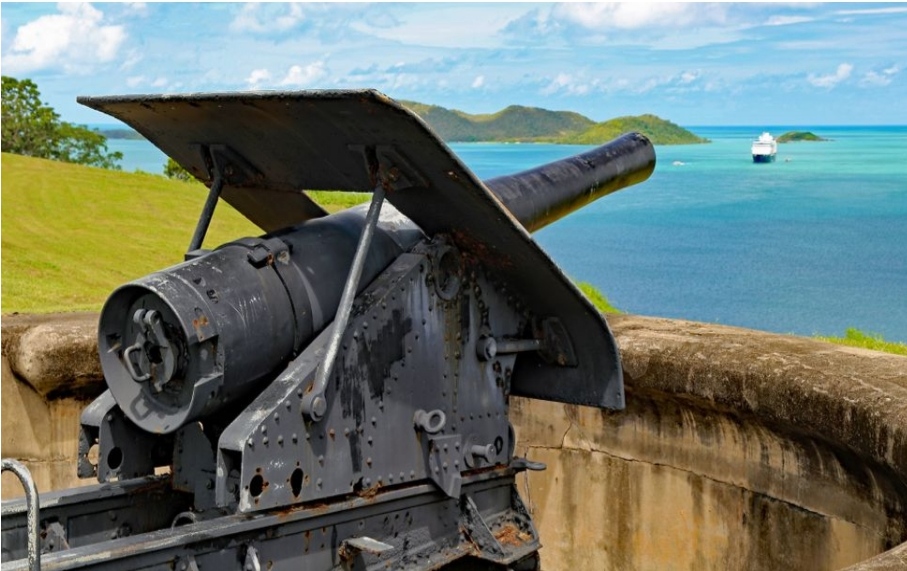
During WW2, Horn Island was one of Australia’s most critical defence posts
“Almost every single Torres Strait Islander man of fighting age – 880 of them – enlisted to defend Australia,” said tour guide Vanessa Seekee, who has dedicated her life to preserving the region’s war heritage since arriving on Horn Island as a teacher in 1994, finding it littered with relics. “That means every family knows someone who served in World War Two.” More than 150 military personnel, and 80 civilians, lost their lives during the conflict.
The stories of Australia’s only all-indigenous battalion are remembered at the excellent Torres Strait Heritage Museum founded by Seekee and her husband Liberty. A visit is included on Seekee’s riveting Horn Island WW2 tour, which took me to several sites, including an anti-aircraft battery at King Point, that have been restored as part of the couple’s Horn Island WW2 Conservation Project. Near the airport, the remains of a crashed B-17 bomber – complete with a paperbark tree growing out of the fuselage – was next on the list.
Travelling to more remote Torres Strait Islands communities, most of which are accessed by plane, requires seeking permission from the relevant local council. An easier way to visit is on an adventure cruise with Coral Expeditions. Its itineraries take in Badu and Moa Islands, part of the Western Islands group, which are home to renowned art centres showcasing the vibrant artistic traditions of the Torres Strait including weaving and lino printmaking. Warfare was once one of the main occupations of Badu men – look for skull motifs in prints representing the artists’ heritage.
But island-hopping isn’t the only way to experience Torres Strait Islander culture. In 1947, king tides wreaked havoc on Saibai Island, just 4km from Papua New Guinea, prompting an exodus of families to the mainland communities now known as Seisia and Bamaga. The latter is home to the indigenous-owned Cape York Peninsula Lodge, where renowned Torres Strait Islander dance troupe Naygayiw Gigi (Northern Thunder) often perform captivating routines rooted in Saibai traditions.
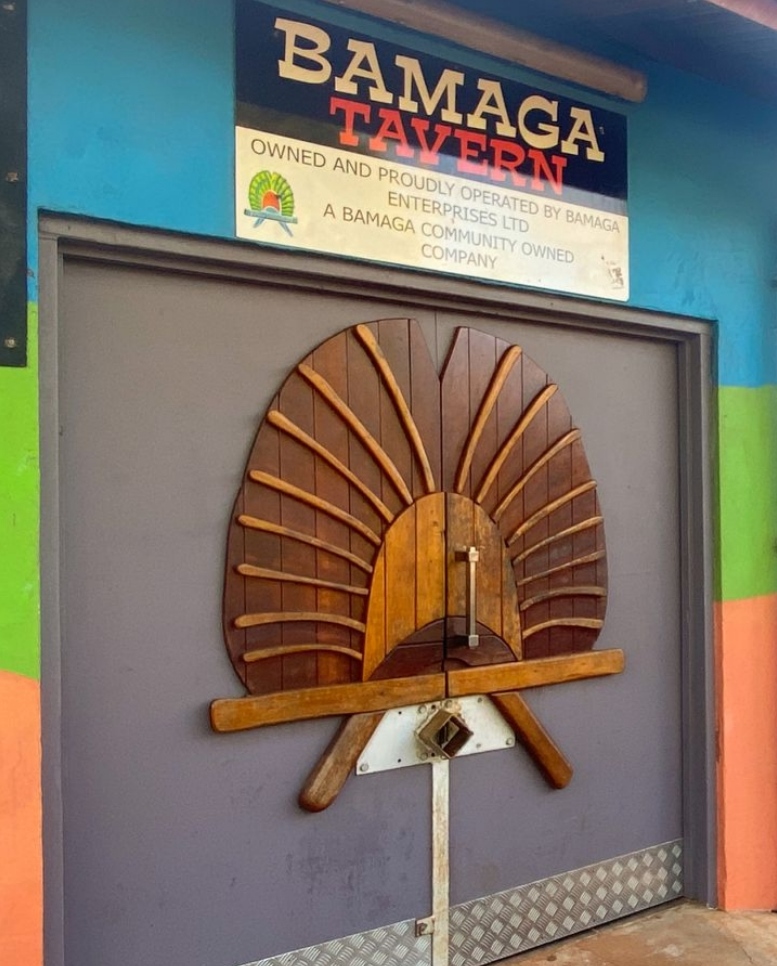
The door of the Bamaga Tavern is fashioned on a Torres Strait Islander Dhari headdress
“So much of our culture is stored in stories, and expressing these stories though dance and song is a way to maintain our culture, and our language, which is really important because language is something that’s in rapid decline,” the troupe’s manager Leonora Adidi told me.
So much of our culture is stored in stories, and expressing these stories though dance and song is a way to maintain our culture
In contrast, another important part of Torres Strait Islander culture that is experiencing something of a renaissance is food. Launched on Australian TV in 2021, the region’s first culinary series Strait to the Plate introduced audiences to a largely unknown cuisine, influenced by centuries of trade with everyone from Pacific Islanders to the Japanese.
Mer (Murray) Island-born chef Nornie Bero has also had a hand in lifting the profile of Torres Strait Islander cuisine following the success of her Melbourne restaurant and bar Big Esso (Biggest Thank You), which opened in 2021.
While traditional dishes are more commonly served in the home in the Torres Strait, there are a handful of places where visitors can enjoy a literal taste of local culture. Tucking into a plate of namas – a fragrant ceviche-like dish made by curing raw fish in coconut milk – on Roko Island, a former pearl farm transformed into a rustic glamping stay just a short boat ride from Seisia, I couldn’t believe I’d never seen this delicious appetiser on an Australian restaurant menu before. No doubt there’s much more to Australia’s ‘other’ indigenous culture we’d do well to know.
Source : BBC TRAVEL




